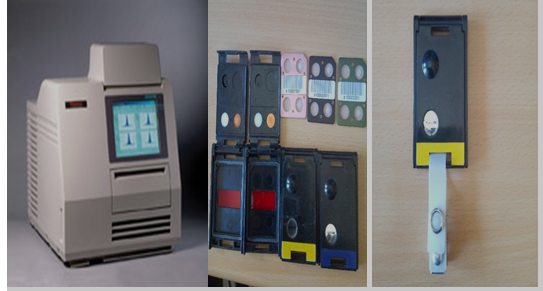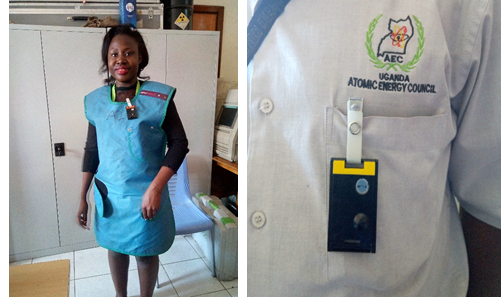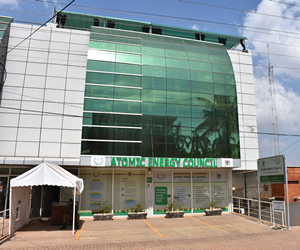AEC operates and maintains a Dosimetry service for purposes of ensuring that radiation measuring devices are worn by individuals who are occupationally exposed to radiation among others…
1.1 Introduction
Section 14(1) of the Atomic Energy Act No. 24 of 2008, requires the Council to operate and maintain a Dosimetry service for purposes of ensuring that radiation measuring devices are worn by individuals who are occupationally exposed to radiation among others.
In that regard, Council acquired a Harshaw TLD reader (Model 6600 Plus, Serial no. 1305386) for reading and annealing Thermoluminisecnt dosimeters (TLDs) for personal monitoring to ensure that occupationally exposed radiation workers are aware of their absorbed doses and that doses do not exceed the regulatory limits as per schedule 3 of the Atomic Energy Regulations, 2012.

A Thermoluminiscent dosimeter is a device used to measure and record the exposure of individuals to ionizing radiation outside the body (external dose). These badges are used by persons who are exposed to X-rays, gamma rays, beta rays, or a mixture of these types of radiation.

1.2 Issuance of TLDs by AEC
A TLD badge is issued upon subscribing to the Dosimetry service. It is issued at zero cost to those facilities which has applied for dosimetry services and their applications are evaluated and found satisfactory to take on AEC dosimetry services. At issuing, each badge is assigned to a wearer and the number of TLDs issued in a batch is equal to the number of persons monitored at that facility. The TLD remains the property of the Council.
1.3 TLD Wearing Period
Wearing periods may be 4, 8 or 12 weeks, depending on the nature of work, practice carried out or as guided by the Regulatory Authority.
Currently the wearing period is three (3) months for all practices in Uganda.
1.4 Return of TLDs to Council
At the end of each wearing period, the TLDs are returned promptly to AEC for reading, annealing and calibration. Prompt return makes it possible to determine if any unusually high doses have been received. All TLDs should be returned after the wearing period, even if they have not been used.
1.5 Issue of Dose results
These are sent to the facility either by Courier or by the AEC Drivers.
1.6 Radiation Dose Forms and Records
Dose reports are issued to a facility after assessment and the records are entered in the registry at AEC.
The facility is required to keep and maintain the same records.
1.7 Payment for reading a TLD
The charges for reading a TLD badge is Uganda shillings 10,000/= This charge is subject to revision from time to time.
Replacement Cost of Card is $130 and this cost may change as may be determined by the Council from time to time. All these charges are paid in the bank on the Uganda Revenue Authority Portal after receiving an invoice from AEC.
1.8 Statistics
AEC is currently monitoring 745 radiation workers (by February 2019).
Efforts are underway to have this number increase in proportion to the AEC complaint facilities.
1.9 Application for TLDs
A facility (authorized person or licensee) fills in an application form which can be downloaded from AEC website and returns to the AEC offices. Evaluation of the application is done and a facility will be contacted to collect the TLDs.
Downloads for Dosimetry




